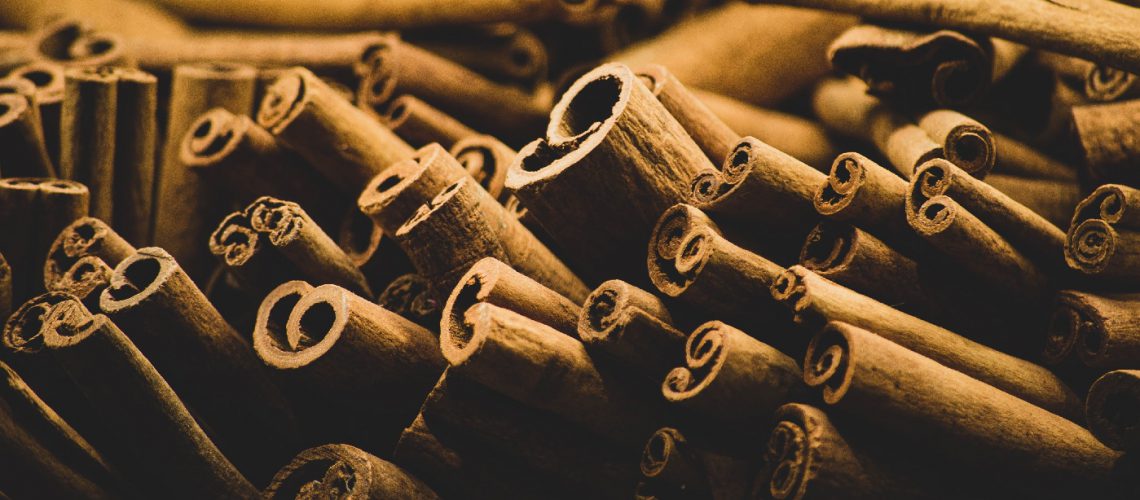When you hear the word “cinnamon,” you may initially imagine a thin small cinnamon stick no more than three or four inches long. However, Nature’s Fusions Cinnamon Bark Essential Oil is distilled from the smooth bark of the evergreen Ceylon cinnamon tree (Cinnamomum verum, formerly Cinnamomum zeylanicum), which can reach as high as 45 feet into the sky! Cinnamon trees are native to Sri Lanka, but are also widely cultivated in South American and the West Indies. The oldest recorded use of cinnamon spice, derived from dried cinnamon bark, was in ancient Egyptian embalming and religious ceremonies. However, the spice quickly found its way out of the casket and into the kitchen! Culinary cinnamon is a popular ingredient in curry, hot beverages, puddings, and baked goods. While powdered cinnamon is well suited for cooking and baking, cinnamon essential oil is an ideal choice to scenting a soap, lotion, or even a whole room with a warm and spicy cinnamon twist!
The Molecular Ingredients of Cinnamon Bark Oil
Our cinnamon bark essential oil is a natural mixture of dozens of plant-generated chemicals, but it is primarily composed of cinnamaldehyde (69.5%), eugenol (9.55%), and cinnamyl acetate (5.12%) (fig. 1). Cinnamaldehyde is a yellow-tinted, sweet tasting oil that has a warm and spicy aroma. Eugenol, on the other hand, has a spicy, pungent taste, and is commonly referred to as “clove oil.” It is much more common across diverse plant families, as significant amounts of eugenol can also be distilled from turmeric, peppercorn, thyme, and ginger. Finally, cinnamyl acetate is a very pale oil with a sweet, floral scent. Together they combine to make a cozy scent that blends wonderfully with lavender, cedarwood, lemon, and more!

Figure 1. Ball and stick molecular structures of cinnamaldehyde (C9H8O), eugenol (C10H12O2) and cinnamyl acetate (C11H12O2). Each of these molecules are phenols, which is a category of molecules that have oxygen-carbon groups bound to a ring of carbon and hydrogen atoms. Phenols can be irritating to the skin and mucosal membranes, so it is recommended to dilute cinnamon bark essential oil before use.
Cinnamon Leaves vs. Cinnamon Bark
Cinnamon trees are evergreen, meaning that they remain green and function through more than one growing season. However, they don’t have thin pine needles like other evergreen trees, such as pine or sprue trees. Instead, cinnamon trees have long, oval-shaped green leaves. These leaves contain a higher amount of eugenol than the bark does, so cinnamon leaf oil tends to have a more clove-like scent than cinnamon bark oil.
So go ahead and give our Cinnamon essential oil a try!

